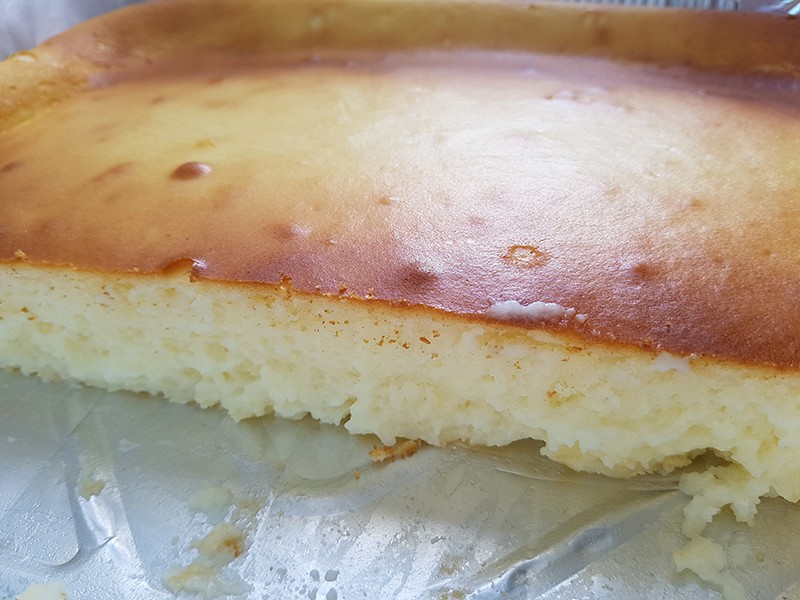Hitlers Germany was known for its organization and efficiency, as well as its deprivations, terror, and cruelty. They also had seniority over every other soldier, up to their own rank, whatever their branch of service. "Secret Field Police"), shortened to GFP, was the secret military police of the German Wehrmacht until the end of the Second World War (1945). Police Arm Eagle - Motorised Police. The arbitrary and brutal policing of soldiers gave them the other nicknameHeldenklauer, hero-snatcher, because they screened refugees and hospital transports for potential deserters with orders to kill suspected malingerers. With the Nazi rise to power and the start of World War II, the floodgates were opened for numerous police organizations to be formed and also the creation of a chaotic hierarchy of security forces. The Feldgendarmerie Also, Felgendarmerie units took active part in Jew hunting operations, including in Western Europe. The Geheime Feldpolizei (German: [ham fltpolitsa] (); transl. Generally they conducted the same policing role, such as controlling rear areas but they also conducted counter-insurgency and extermination operations witheinsatzgruppenagainst Jews, partisans and those deemed to be enemies of the Reich. basic unit within the Feldgendarmerie was the Trupp (broadly being met by the civil authorities. Eighty percent of Gestapo investigations were in response to information provided by ordinary Germans about their neighbors, while 10 percent were based on information provided by other branches of the German government and another 10 percent in response to information that the Gestapo itself unearthed. and of course the massive Fallschirmpanzerkorps Hermann Gring, The Feldjgerkorps was formed, answerable only to the high command; it thus had greater authority than other military police units. . outbreak of WW1, 33 Feldgendarmerie units were formed with drafts of men from The Feldgendarmerie was the regular military police arm of the Wehrmacht. In case of a maneuver, mobilization or war 50% of the Gendarmerie formed the core of military police of the army, called Feldgendarmerie. The organisation of the Feldgendarmerie began at the German High Command O.K.H (Oberkommando Des Heeres). The Sicherheitsdienst, abbreviated SD, or Security Service, acted as the intelligence service of the SS and the Nazi Party and was considered a sister organization to the Gestapo. appearance of a Feldgendarmerie NCO in the early part of the war. The Germans have STRAFBAT shirkers which are cheaper than normal inex shirkers and can be paired with Feldgendarmerie units which get an aura which removes shirker (for . After the surrender of Germany, Feldjgerkommando remained armed and at the disposal of the US Army in order to maintain discipline amongst the German PoWs. By the end It was administered by the RSHA, the head office of the Reichs security service, and was considered a dual organization of the SD and also an office under the Sipo. 6.Kompanies' Feldgendarmerie Unit, this is a second impression in 6.Kompanie and we are proud of these guys and their service to the Unit. Feldgendarmerie NCO with two junior ranks stand beside their Opel staff In Belgium and France they were also deployed against the resistance. Feldgendarmerie CO Feldgendarmerie CO (Coat) Medical Enlisted Medical NCO Medical CO Panzerwaffe Enlisted Panzerwaffe NCO Panzerwaffe CO. Levisham Station, was decorated with period posters, and French signs during the (NYMR) 'Wartime Weekend' to become 'Le . a second style of Gorget began to be issued which retained the original design, The Feldgendarmerie was the regular military police arm of the Wehrmacht. The 353rd trained and performed guard duty in France until D-Day in June , 1944. German Station Guards or Feldgendarmerie, military police units, at the 'Railway in Wartime' North Yorks Moors Railway (NYMR) event at Levisham Railway Station in inclement weather on weekend 12th-13th October 2013. This patch uncensor some missing uniforms for Heer, Luftwaffe, Kriegsmarineand Feldgendarmerie units. Different The history Many ordinary soldiers deemed to be deserterswere summarily executed byFeldgendarmerieunits. Original Typical There were also lessons in air defense, animal protection, and typing and stenography courses. It was redesignated Panzer-Division Feldherrnhalle in November 1944. Feldjgers were recruited from decorated, battle-hardened officers and NCOs. The Wehrmacht, or Nazi Germany's armed forces, had many divisions and specializations of soldiers who fought for Hitler's Reich. Their basic duties were to: They could also be employed in the same capacity as the Feldgendarmerie. As This is an apolitical forum for discussions on the Axis nations and related topics hosted by the Axis History Factbook in cooperation with Christian Ankerstjernes Panzerworld and Christoph Awender's WW2 day by day. The unit consisted of former polizei members and volunteers recruited from existing Sturmabteilung (SA) and Schutzstaffel (SS) units. A Luftwaffe Felgendarmerie units took active part in Jew hunting operations, including in Western Europe. A A Feldgendarmerie major general who was in charge of all Feldgendarmerie personnel attached to the Wehrmacht, was directly subordinated to the Generalquartiermeister. In some cases, a single GFP officer could be attached to a Feldgendarmerie unit to assist in antipartisan operations. Feldjgerkommando I and II served on the Eastern Front, while Feldjgerkommando III ended the war in the West. then "Marshall" absolute legal power which made him a figure that In the wake of combat operations they acted as temporary town police, rounded up enemy stragglers, dealt with guerrillas, collected refugees and prisoners, guarded captured booty, ensured that civilian weapons were surrendered, were responsible for the organization of civilian labor, and erected military and civil signs. Show per page. The Feldjgerregiment contained five Feldjgerabteilungen each of which contained three Kompanies, of about 50 men. They had the authority to hold a drumhead court martial and carry out executions on the spot. of Germany's military police dates back for many hundreds of years, certainly Feldgendarmerie (military police); Gebirgsjager (mountain troops); Heer (army); Panzer (tank crews); Waffen SS and U-boat crew. FHH- Wolff, Helmut, 07.01.1945 (5121), Oberstleutnant, Kdr. In some cases in larger The Fj battalion consisted of five motorized companies, each of 30 officers and 90 non-commissioned officers. BACKGROUND: As with the Army, the "SS-Feldgendarmerie", (SS-Military Field Police), units were established on mobilization in 1939 and drew the majority of its personnel from the civil Ordnungspolizei, (Order Police), as they were already familiar with policing regulations and tasks. Other German police and security organizations included units such as the Army Patrol Service or Heeresstreifendienst, a branch of the military police tasked with maintaining order and discipline, and occasionally taking on traffic duties, as well as checking troop identification papers with the authority to report offenders to their commanding officers for punishment. Founded in 1999. A Wide Variety of Other Organizations and Functions. Garrisons were patrolled by regular soldiers performing the duties of the military police. Military policemen were armed with Walther pistols that had been designed for use by civilian police, either the model PP (Police Pistole) or PPK; they were favored by officers over the Luger PO8 and Walther P38 used by other ranks. pistols such as the MP28 or MP40. The ratio of Gestapo officers to the population of the areas they were responsible for was extremely low. The term Soldat was generic; most soldiers had a rank title based on the type of unit they were assigned to, or the trade in which they were employed. Typical If an officer of the Feldgendarmerie failed to abide by his code of honor, he would be relieved of his command, turned over to the Feldgendarmerie replacement battalion and returned to his home duty station in disgrace. In the centre In 1936, the German civilian police were divided into the Ordnungspolizei (Orpo) or Order Police and the Sicherheitspolizei (Sipo) or Security Police. FHH (for action 01.07.1944 an der Beresina)-- [as Drr notes this is the same man receiving two AUs, second unit should be the one at time of award]- Kuhna, Bernhard, 27.05.1944 (3368), Major, Kdr. The Feldjgerkorps (German: [flt.jko]) was a military police organization in the German Wehrmacht during World War II. They hadarrived from (the) Kaukasus. A battalion was subdivided into smaller-sized Truppen[citation needed] which were attached to each division or corps. These SS units had a severe reputation for being strict enforcers of military law. In the center of the plate was a large spread eagle and swastika over a scroll bearing the legend Feldgendarmerie. The gorget was suspended by a neck chain. This corps was formed into three Feldjger Commands (I, II and III), which reported directly to Field Marshal Keitel, and was senior to all other military police organizations. Their duties policing the areas behind the front lines ranged from straightforward traffic control and population control to suppression and execution of partisans and the apprehension of enemy stragglers. The Prussian Gendarmerie staff (Kniglich Preuische Landgendarmerie; Royal Prussian State Gendarmerie) were well-proven infantry and cavalry NCOs after serving their standard service time at the army and some COs. Officially they were still military personnel, equipped and paid by the Ministry of War, but in peacetime attached to the Ministry of the Interior, serving as normal or as mounted police. Generally they conducted the same policing role, such as controlling rear areas but they also conducted counter-insurgency and extermination operations with Einsatzgruppen against Jews, partisans and those deemed to be "enemies of the Reich". After 1939, when many Gestapo personnel were called up for military duty or moved to other security services, the overwork and understaffing at local offices greatly increased. The commanding officer of a Feldjgerkommando had equal status to that of an Army commander with the authority to punish Wehrmacht and Waffen SS personnel alike. Toward the wars end, they were more often employed as frontline troops and were involved in many desperate operations. Over time, many smaller police units were organized or cluster together for the purpose of expanding control. by Fredd 29 May 2004, 13:18, Return to Heer, Waffen-SS & Fallschirmjger. When combat units moved forward out of a region, the Feldgendarmerie role would formally end as control was then transferred to occupation authorities under the control of the Nazi Party and SS. level carried two numerals, an Arabic numeral indicating the individuial soldiers They were used as standard military policing roles, Occupation troops, for controlling "Strafbattalions" and hunting for deserters. collar was featured, with bright red edge piping. After the middle of 1943, cases were identified in which German soldiers in France and Russia had deserted to the resistance or partisans. By the end of WW1, a total of 115 Feldgendarmerie units had been formed. Cavalry NCOs. Courses lasted one year and failure rates were high: in 1935 only 89 soldiers graduated from an initial intake of 219 candidates. The German Feldgendarmerie force had its origins in the 19th century, with most German states forming military units for policing duties. Feldgendarmerie were employed within army divisions and as self-contained units under the command of an army corps. The Feldgendarmerie units were generally given occupation duties in territories directly under the control of the Wehrmacht. Preparation and assembly of white metal and plastic figures is covered in As public support for the Wehrmacht was evaporating, the Feldengendarmerie also became known as the Heldenklau or hero-snatchers because they were assigned the unpopular task of searching streams of refugees for possible deserters and sending rear-echelon personnel to the front. This was especially true as the war dragged on and the few fit and able men serving in such units were drawn off to combat formations. With the IImperial In January 1944 as the Red Army began to advance on the Eastern Front, the power of the Feldgendarmerie was superseded by the creation of the Feldjgerkorps. Members of the Feldjger had at least three years of frontline combat service and had won at least the Iron Cross Second Class. Feldgendarmerie Police Insignia. They would operate in Kbelwagen, trucks and motorcycles (with sidecars). The commanding officer of a Feldjgerkommando had the same level of authority as an Army commander with the authority to punish any soldier of any branch of service (the Waffen SS included). this would be the exception. The Feldgendarmerie had the authority to pass through roadblocks, checkpoints, and secured areas and were allowed to conduct body and property searches and obtain the assistance of any other military or civilian personnel. Each Feldgendarmerie battalion also had support personnel such as cooks, clerks, and armourers. Approximate dimensions: 1.25" W x 20" L. eldgendarmerie units were generally given occupation duties in territories directly under the control of the Wehrmacht. Prior Contribute to chinapedia/wikipedia.en development by creating an account on GitHub. The symbols are still censored. FHH (for action 25.06-29.07.1944 zwischen Mogilew und Seirijai)- Koch, Erwin, 00.00.1945 (6251), Hauptmann, Pz.Gren.Ers.u.Ausb.Rgt. In the late stages of the war, the role of the Feldgendarmerie took on greater significance as they became responsible for the fate of tens of thousands of deserters, called Fahnenflchtiger or, literally, runners from the flag. Many deserters were summarily executed. Feldjager Posts: 2549 Joined: Fri May 06, 2005 10:19 pm Location: South West England. They were used for general policing duties but not for discipline inside the units. FHH Holders of the German Cross in Gold (16)Holders of the Honor Roll Clasp of the Heer (3)- Maciejewski, Leo, 05.06.1944, Hauptmann, I./Gren.Rgt. modern Feldjger). But by 1943 as the tide of war changed for Nazi Germany, theFeldgendarmeriewere given the task to maintain discipline in the Wehrmacht. from highly polished steel, with at each side a gilt brass Prussian eagle, facing They were often called into action against partisan forces in Eastern Europe and Russia, but in the main they were inadequate to the tasks allotted them. The Feldgendarmerie were the uniformed military police units of the armies of the Kingdom of Saxony (from 1810), the German Empire and the Third Reich until the conclusion of World War II. The staff officer was responsible for maintaining order and discipline, traffic control during large scale troop movements and maintaining transport routes. During the had no full time permanent Military Police force. "Blitz". dark green with red piping. II./Gren.Rgt. the civil Gendarmerie and other suitable soldiers, again many of whom were experienced cost 20 Armaments 1x MP 40 (9mm) RoF: 117.5 r/m Bullet Damage: 0.4 Suppression: 6 Blast: 26 Accuracy: 50 % Range: 100 m The SS was responsible for the vast majority of war crimes perpetrated under the Nazi regime. Feldgendarmerie were employed within army divisions and as self-contained units under the command of an army corps. had an attached Feldgendarmerie Trupp. The Feldgendarmerie (roughly translating to "Field Police") were the military police units of the armies of the German Empire (including the Wehrmacht) from post- Napoleonic times to the conclusion of World War II . The uniform of the Feldgendarmerie was identical with the uniform of the Landgendarmerie. Feldgendarm on the Eastern Front in 1944. Click on the green "Subscribe" button, and Garry's Mod will download it the next time you start it. This Standard His immediate subordinate was a staff officer attached to each Oberkommando Army who commanded the one or more Feldgendarmerie battalions attached to each Wehrmacht formation. Small Military Police (Militarpolizei) units were operating in Austria-Hungary, but Feldgendarmerie units were more widespread. ), spter Panzergrenadier Division "Feldherrnhalle"Stefano Di Giusto - Panzer Sicherungs-Kompanien and Panzer-Abteilung 208, I. Indeed, the Gestapo was overwhelmed with denunciations and spent most of its time sorting out the credible from the less credible of these. German Uniforms, Insignia and Equipment, 1918-1923 - Charles Woolley 2002 . The badge was was the standard Prussian eagle, with the Guard Star At regular intervals, a gazette of wanted soldiers was published and circulated to all security and police agencies in the army group. Pz.Gren.Div. This The Orpo consisted of the Schutzpolizei (municipal police), the Gendarmerie (rural police), and the Gemeindepolizei (local police). inwards (for Bavaria, lions heads replaced the eagles, for Saxony and Wrttemberg By 1943, as Germanys fortunes were turning and the morale of its soldiers began to wane, many able-bodied men made every effort to avoid service, especially on the Eastern Front. In August The key identifying feature of the Feldgendarme was the duty gorget or Ringkragena half-moon shaped sheet metal plate. 11.95. identity, over a Roman numeral indicating the number of the Army Corps. Join historians and history buffs alike with our Unlimited Digital Access pass to every military history article ever published (over 3,000 articles) in Sovereigns military history magazines. Infanterie-Division (mot) and Grenadier-Regiment 271 "Feldherrnhalle" of 93. Feldgendarmerie Trupp would normally be supplied with a number Infanterie Division (mot. but were in grey painted steel. to Korps size) a Feldgendarmerie Kompanie would be found but In the spring of 1944, cases of desertion started to rise rapidly. Personal weapons consisted of small arms such as the Walther PP which was designed as a civilian police pistol (PP Polizei-Pistole) or the Walther PPK both of which were favoured by officers whereas the Luger P08 and Walther P38 were used by other ranks. Feldgendarmerie The Feldjgerkorps operated parallel to the front line and approximately 1215 miles behind it. Until this time, the Feldgendarmerie and Geheime Feldpolizei had been relied upon to try to curb desertion and maintain discipline; however, the recent string of German defeats and the fact that there was no single service dedicated solely to catching deserters impelled the creation of the Feldjgerkorps in November of that year.
Olaplex 4 In 1 Moisture Mask How Often To Use,
Chris Kyle Longest Sniper Shot,
Glenbrook South High School Famous Alumni,
How Much Is The Wimbledon Trophy Worth,
Articles F



